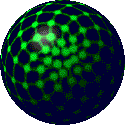 Whose
Culpa?
Whose
Culpa?
 Whose
Culpa?
Whose
Culpa?
....Whenever someone complains we may well ask about his or her responsibility to the topic under discussion. The Catholic Church has a ritual of confession in which one states three times the phrase "Mea Culpa, Mea Culpa, Mea Culpa;" "It's my fault, It's my fault, It's my fault." The point is to focus on one's own involvement and behavior; anthropological studies as well as quantum physics have shown that our presence always affects a situation even when we're unaware of such consequences. One's background and behavior is directly linked to the problem; we can see how reformers throughout history (Henry Vlll, Martin Luther, Calvin, Marx, et al.) were imbedded within the cultural matrix of their time. ....Having examined one's conscience and being clear on the situation, we then ask on what grounds does one judge and arrive at precise grounds for complaints? In the past such explanations as divine inspiration were acceptable, but these simply remove the question one step further without answering it. Deconstructing complaints leads us to a series of step; the individual feels that something is wrong. These feelings are experienced as an emotional disturbance. The intensity of these feelings is related to the seriousness of the problem and decides the level of our response. ....Complaints can then be classified as concerning situations that are harmful to the individual, the culture, or both. We have an instinctive sense of fairness and justice, which Kant described as a "categorical imperative." This category, this type of situation, makes it imperative that we react in response to it, and our response must be universal rather than self-centered. ....Cultural institutions are composed of people, whose personal and moral values often fall short of Kant's ideal. Humans err and do not always correct their mistakes. Regenerative functions form part of every system in order to compensate for minor breakdowns and deviations, but major negative transformations do occur in societies. We define them in terms of civilized values; reversals such as Nazism, or decadence as seen in the court of Louis X1V or the Catholic Church in the 16th century. ....The historical context is interesting. We understand the barbarism of primitive societies as we note a linear, sequential development of civilization in the growth and enshrining of democratic values, leading to the greatest good for the largest number of people. Decadence is a reversal of democracy, in which vested power interests limit social growth and eventually lead to the ill health of the social body, causing it to collapse like the Berlin wall. ....Such decadence now affects the contemporary art world. It is grounded in the belief that "the work of art draws its power from a historical legitimization process firmly rooted in the institutions of western culture, and not from being an unalterable conduit to transcendental realms."(1) A more overt statement is found in Mary Ann Staniszewski's book Believing Is Seeing. "When an artist creates a work of Art it has no intrinsic use or value; but when the artwork circulates within the systems of art (galleries, art histories, art publications, museums, and so on) it acquires a depth of meaning, a breath of importance, and an increase in value that is greater proportionately than perhaps anything else in the modern world."(2) ....Our learned academics have often been mistaken. One has only to read "The Science of the Concrete" by Claude Levi-Strauss to realize he completely misreads the praxis of painting, unable to grasp it outside his own intellectual paradigm. The above statements on the value of works of art are equally erroneous. They come from an overvaluation of institutional power, as well as a pseudo-egalitarian movement from the 1970's and 1980's, which sought a displacement of values (3) by denying differences in quality between people. ....The above statements translate as follows; there is no value within a work of art. Its value comes from a curator using it within a specific context. The work is an illustration of the theory. In science it's the opposite; theory is based on observation of fact. It is admirable that the fine arts have been able to rise above such limitations.
|